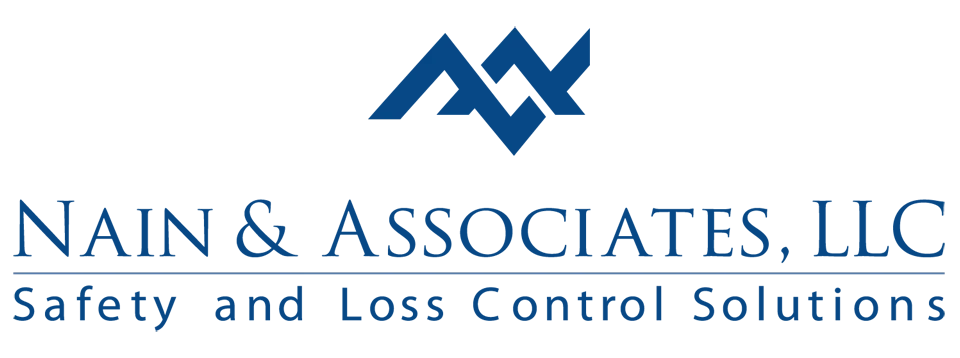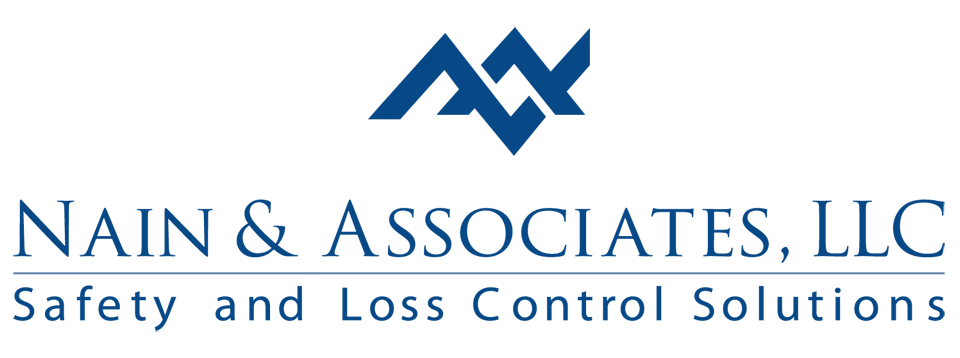

(828) 471-4317
Now Offering Spanish Safety Training!

Now Offering Spanish Safety Training!
Hazard Communication 2024 Update: New Label & SDS Deadlines for 2026/2027 Explained
Hazard Communication
What Changed in OSHA’s 2024 HazCom Final Rule

OSHA finalized updates to the Hazard Communication Standard in May 2024, aligning primarily with GHS Revision 7 and clarifying several grey areas from the 2012 rule. The final rule took effect July 19, 2024, starting a phased transition for labels, safety data sheets, and training.
Key changes touch hazard classification, label flexibility for small packages, and the content of SDS sections. Physical hazard criteria now better address aerosols and desensitized explosives, while health hazard updates reinforce use of modern test methods and improve consistency between labels and SDS narratives overall.
OSHA also issued minor corrections in October 2024, but the core compliance dates did not change. Most manufacturers and importers must refresh labels and SDS for substances by January 19, 2026, and for mixtures by July 19, 2027, with employer program updates along the way.

Who Must Do What, and When
Substances first. Chemical manufacturers, importers, and distributors evaluating single-ingredient products must classify to the updated criteria, then update labels and SDS by January 19, 2026. During the transition, you may comply with either standard, but your chosen approach must be consistent across the label and SDS for the same product, and you must retrain employees when formats or elements change to reflect the revised requirements.
Mixtures follow later. Manufacturers and importers of mixtures must update labels and SDS by July 19, 2027. The later deadline recognizes the time needed to obtain updated component data and to reclassify mixtures. Distributors should coordinate early to avoid split inventories. Employers that rely on purchased chemicals must manage incoming revisions and ensure workplace labeling and written programs align with the supplier documentation and training.
Employers using chemicals—whether or not they formulate—have parallel responsibilities. Update your hazard communication program, workplace labels, and training once the products you use begin arriving with revised labels or SDS, and no later than your jurisdiction’s employer deadlines. Integrate changes into onboarding and refresher training, revise procedures for small containers, and document the evaluation. Supervisors should know when to replace labels, where SDS are stored, and how to communicate updates.
New Label Elements and Small Containers

The 2024 rule refines label element allocation and adds flexibility for very small packages. Where full labels do not fit, pull-out or fold-back labels, tags, or outer-packaging labels may be used so users still see product identifiers and essential hazard information without obscuring safe use.
For containers of three milliliters or less, minimum the product identifier appears on the immediate container while the complete label remains on the outer package. Employers should ensure outer labels stay intact, instruct workers not to discard them, and maintain links to the corresponding SDS.
Labels must still reflect significant new information promptly and remain consistent with the SDS. When suppliers update a label, downstream users should replace workplace labels on incoming containers and verify that secondary containers and small-quantity practices match the revised hazard statements, pictograms, and precautionary language.
The 2024 rule refines label element allocation and adds flexibility for very small packages. Where full labels do not fit, pull-out or fold-back labels, tags, or outer-packaging labels may be used so users still see product identifiers and essential hazard information without obscuring safe use.
For containers of three milliliters or less, minimum the product identifier appears on the immediate container while the complete label remains on the outer package. Employers should ensure outer labels stay intact, instruct workers not to discard them, and maintain links to the corresponding SDS.
Labels must still reflect significant new information promptly and remain consistent with the SDS. When suppliers update a label, downstream users should replace workplace labels on incoming containers and verify that secondary containers and small-quantity practices match the revised hazard statements, pictograms, and precautionary language.

Beyond containers, the rule clarifies label allocation for complex hazards. Aerosols now include a nonflammable category, desensitized explosives are addressed, and flammable gas criteria are reorganized. These changes aim to tighten alignment with GHS while improving clarity for responders and workers. Employers should expect updated pictograms or signal words on certain products and plan to retrain employees so they can recognize new label elements, understand any changed precautionary statements, and locate details during tasks safely.
For workplace labeling, the standard maintains flexibility, allowing employers to use words, pictures, symbols, or a combination that conveys the hazards. The crucial requirement is consistency with the shipped container label and the SDS. As revised products arrive, update secondary container labels, point to the correct SDS location, and refresh your written program to capture small-container handling rules, replacement triggers, and training expectations, so supervisors and employees apply the same approach across shifts and sites.
SDS Updates: What to Change and How
SDS content sees targeted revisions. Sections 2, 3, 9, and 11 are refined to strengthen hazard identification, composition details, physical and chemical properties, and toxicological information, respectively. Prescribed concentration ranges may be used in Section 3, supporting trade secret protections while informing users. Suppliers add interactive effects in Section 11 and reorganized property data in Section 9 to improve readability and downstream risk assessment quality.
Start with your inventory. Identify substances and mixtures you manufacture or import, then map which SDS require reauthoring and which labels need reallocation of elements. Confirm classifications under the updated criteria, pulling new component data for mixtures. Maintain version control, capture the basis for decisions, and plan how to communicate changes to customers and employees, including precautionary statements, pictograms, and revised first-aid or firefighting guidance.
Finally, stage the changeover. Establish a cutover sequence for substances before January 19, 2026, and for mixtures before July 19, 2027. Train supervisors and employees on what changed and why, update your SDS library and access points, and revise procurement language to require compliant documentation. During transition, avoid mixing labels from different standards on the same product, and document checks so you can demonstrate diligence during audits or client reviews.
Practical Steps to Get Ready in 2025
Build a cross-functional plan. Assign a HazCom lead, inventory chemicals, and sort by substance versus mixture. Flag data gaps, suppliers to contact, and labels or SDS needing reauthoring. Create a calendar with internal deadlines ahead of January 2026 and July 2027 to protect production schedules.
Update procedures. Define how small containers are labeled and stored, who replaces shipped labels, and where revised SDS are kept. Standardize secondary container practices. Add notifications to toolbox talks, refresh slides, and script talking points so supervisors explain new elements across crews, shifts, and locations.
Document everything. Keep classification rationales, label proofs, vendor confirmations, and training rosters. Note when products transition to revised labels and SDS, and tag stock to prevent mixing. Good records support continuity, make audits smoother, and help defend decisions, especially for mixtures with complex component updates.

Procurement and quality teams are pivotal. Ask suppliers for updated classifications, proposed label text, and draft SDS early, and build those requirements into purchase orders. Where you supply private-label goods, coordinate artwork and packaging timelines now, including fold-out labels for small containers. IT should validate SDS hosting locations, links on intranet pages, and backup access during outages. Safety staff can pre-schedule refreshers so crews learn new signal words and precautionary statements before summer heat arrives.
Finally, allocate budget and track progress. Count hours for reauthoring SDS, graphic changes to labels and inserts, and supervisor training time. Reserve funds for printers, small-container accessories, and systems work to update SDS libraries. Use a simple dashboard to measure completion by product family, supplier response rate, and training coverage. A monthly cross-functional huddle keeps momentum, resolves bottlenecks, and documents decisions—useful for clients, insurers, and regulators who ask how you managed the transition this year.
How Nain & Associates Can Help
Nain & Associates, LLC supports manufacturers, importers, distributors, and end-users through every step of the HazCom update. Our OSHA-authorized trainers and board-certified professionals can audit your current program, prioritize substances versus mixtures, and map the exact tasks needed to meet the 2026 and 2027 deadlines—without disrupting production. We deliver bilingual training and practical procedures that supervisors can use on the floor and in the field.
We develop or refresh written programs, align workplace labeling with shipped containers, and create standard work for small-container handling. Our team can review supplier SDS for completeness, coordinate reauthoring where needed, and stand up a searchable library with version control. For mixed operations, we schedule changeovers to minimize waste, avoid mixed labeling on identical products, and document decisions that support client audits and regulatory inspections.
Need extra hands? We can embed on-site safety professionals to run inventory checks, relabel shipments, and deliver toolbox talks that translate changes into practical actions. For multi-site companies, we coordinate timelines, train local champions, and verify consistency between facilities. When questions arise, our experts respond quickly with defensible guidance. Call (828) 471-4317 or request services to start a focused plan that meets deadlines, protects workers, and keeps production moving forward.
Have Questions About What We Offer?
To learn more about our services, contact us today!
Have Questions About What We Offer?
Contact us to learn more about our services

Speak with a
safety Specialist
Workplace Safety Training & Consulting Experts for
Charlotte, Hickory, Asheville, North Carolina and
the Southeast for since 2005!
Design By: Customers.Plus
© 2025 | Nain & Associates LLC


